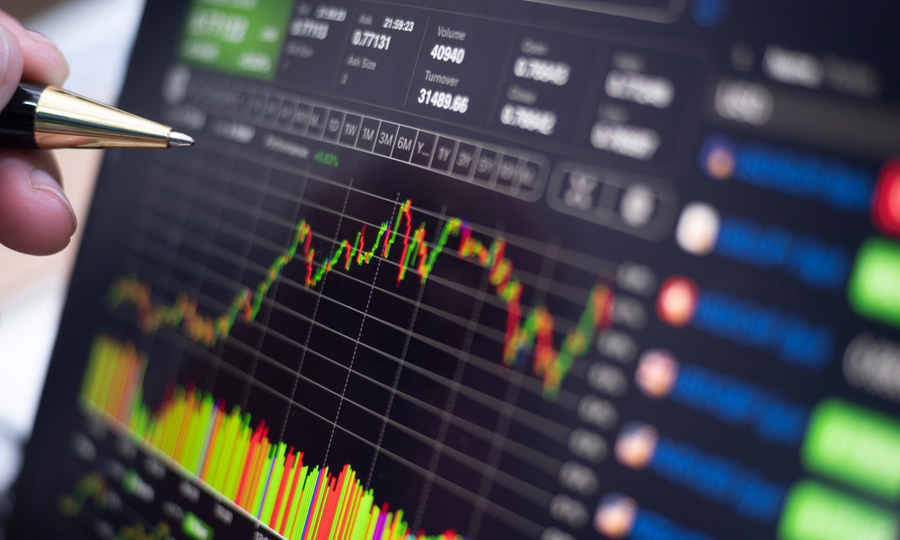I WANT
RELATED LINKS
I WANT
RELATED LINKS
RELATES LINKS
I WANT
RELATES LINKS
Services
Related Links
Use and Management of Cookies
We use cookies and other similar technologies on our website to enhance your browsing experience. For more information, please visit our Cookies Notice.
- Personal Banking
- Stories & Tips
- Grow Your Wealth
- Active Investment vs. Index Investment
- Personal Banking
- ...
- Active Investment vs. Index Investment
Active Investment vs. Index Investment
09-11-2021
When talking about an investment style, people are likely to refer to Active and Index investment. As investors have their own style, we may wonder which style creates better returns. Choosing style is an art of investment. Even though investors have the same pattern of investment but their styles vary. Each investment style is a key element to a different level of success.
การเลือกสไตล์การลงทุนเป็นศิลปะอย่างหนึ่งในการลงทุน เพราะถึงแม้ว่านักลงทุนจะมีรูปแบบการลงทุนที่เหมือนกัน แต่การเลือกสไตล์ที่แตกต่างกันก็เป็นส่วนสำคัญที่ทำให้ประสบความสำเร็จในระดับที่ต่างกัน
Active Investment
Investors will try to choose only the best asset by focusing on generating benefits more than safety. Therefore, investment port mostly consists of high-risk assets but there’s a tendency to gain high benefits. It’s noticeable that the price of investment assets is fluctuated to add the highest value to total port productivity.
If investors want to arrange this investment style, they need to study information intensively to find high-growth assets, follow the market continually, and trade according to the situation. Moreover, investors must place importance on risk management as high risk may possibly cause big losses as well. A concern on Active investment is to suffer the minimal loss and when an opportunity comes, put maximum effort to make most profits.
There’re many investment strategies, such as Basic Factor Analysis, Technical Analysis, in order to find a cheap asset and then buy it. After that, selling it when that asset price is highly adjusted. That means focusing on catching the timing of investment to create higher benefits than the average market.
Index Investment
Investors will try to invest with a goal to let investment port create benefits as close to the Rate Of Change of Asset Index at the same level of risk as that Asset Index. Thus, this type of investment is a strategy focused on diversifying the asset allocation, and setting precise investment goals and investment periods, such as expected benefits and preferred liquidity in each period.

Difference between Active Investment & Index Investment
| Active Investment | Index Investment |
Goal | Trying to find better benefits than the average means to win over the market. | Try to create benefits as close to the average. |
How to be successful? | Take a high risk. Be skillful in investment analysis to know which asset has the potential to generate the best benefit. | Take relatively low risk and focus on diversifying the asset allocation, or investing in an asset that depends on the weight of the reference index. |
Other features | Have an opportunity to receive tremendously high benefits. | Receive benefits as close to the overall market. |
Suitable Assets to invest | All types of assets, such as Stock, Bond, Mutual Fund, Real estate, Commodity. | Some assets, such as Stock, Bond, Index group, SET50 Index Fund. |
Source: www.investopedia.com, The Stock Exchange of Thailand

How to Choose Investments
Investors who trust that the strategy of Active investment can make more benefits than the market, may catch the timing of investment to change asset allocation, or change the weight of investment in Sector Rotation.
For example; investors may reduce the weight of stock investment when forecasting that the stock market is going down, and may also lower Beta value than invested stock (Beta value is a tool that investors take it to consider in choosing stocks to reduce risk. Stocks that are safe and lower fluctuated than the overall market is a Beta stock which is less than one time). On the contrary, investors may increase the weight of stock investment when forecasting that the stock market is rising.
Index investment will emphasize designing several asset groups, such as arranging the number and ratio of investment in each stock group as close to the stock group that is under the stock index used for benchmark reference. For example; if investors want to gain yields and accept risk at the same level as SET50 Index, they may invest in all stocks under the SET50 Index calculation by determining the investment ratio in each stock as equal to the ratio of the market value of SET50 (Source: The Stock Exchange of Thailand).
However, investors need a super high budget to buy all stocks in SET50 Index; therefore, asset allocation and diversification in all stocks may not be possible. Investors can invest through Mutual Fund that imitates SET50 Index because Fund Manager will track with the Reference index. As a result, Fund benefits will be close to Reference index benefits, depending on the policy of which Reference index will be tracked.

Pros and Cons
| Active Investment | Index Investment |
Pros | -Have an opportunity to gain excellent benefits. -Be able to invest in all types of assets. -Be able to adjust port all the time. | -Low cost and expense in investment. -Easy for investment. -Automatic diversification |
Cons | -High cost and expense in investment. -Tentatively get a big loss all the time. | -Lack of opportunity in making high profit. -No agility to arrange investment port to fit the situation. -Not able to invest in all types of assets. -If benefits of the overall market are lower adjusted, port benefits will be reduced accordingly. |
Source: www.sofi.com
Active investment and Index investment are two main principles and choices for retail investors. Each type has its own different pros and cons. Before investing your money to create an investment port, it’s important to find out your investment goal along with studying each type of asset investment. No matter it’s Active or Index investment, always be reminded that you can create a strong investment port, or choose a mixed investment strategy of both types all at once.
